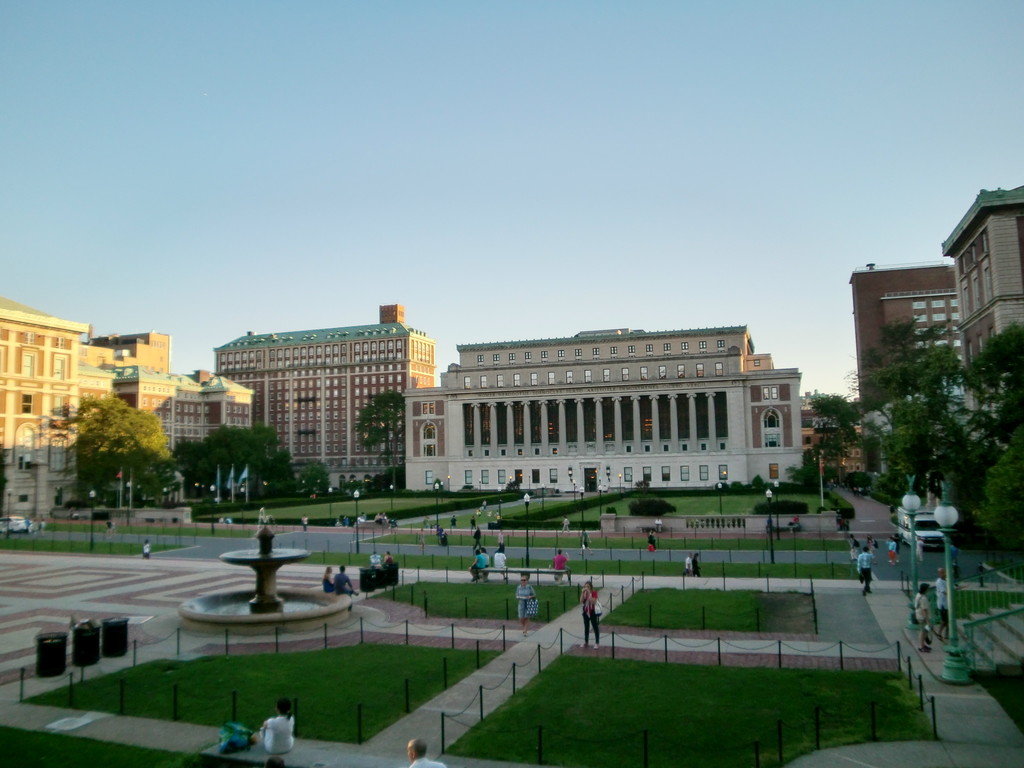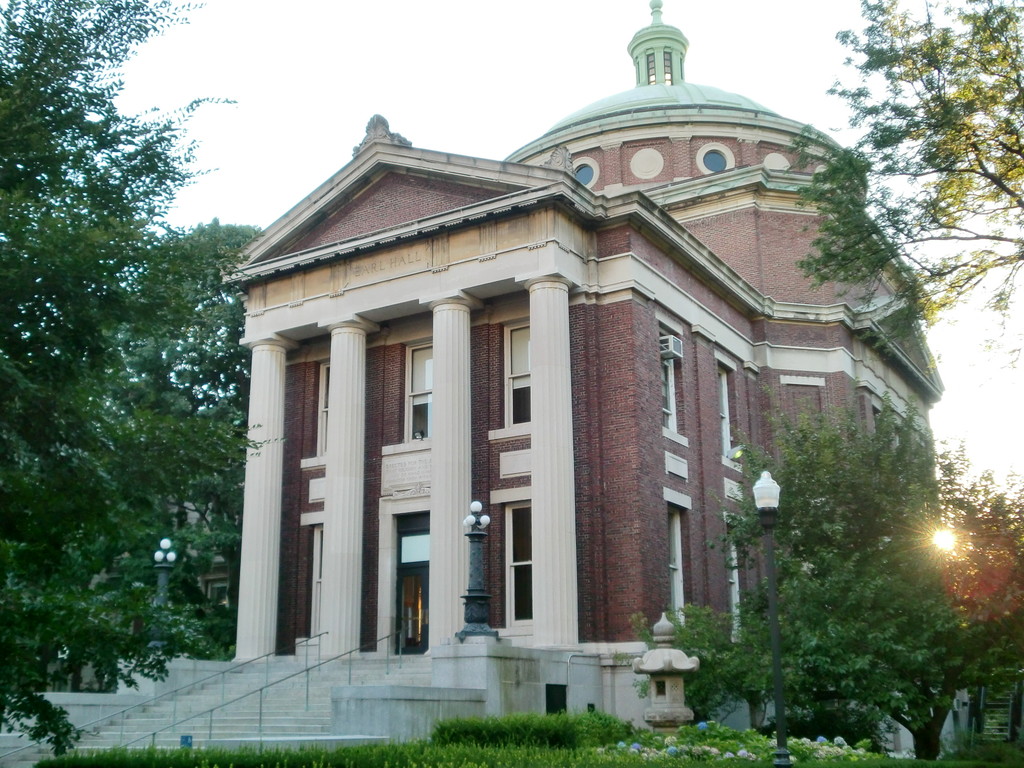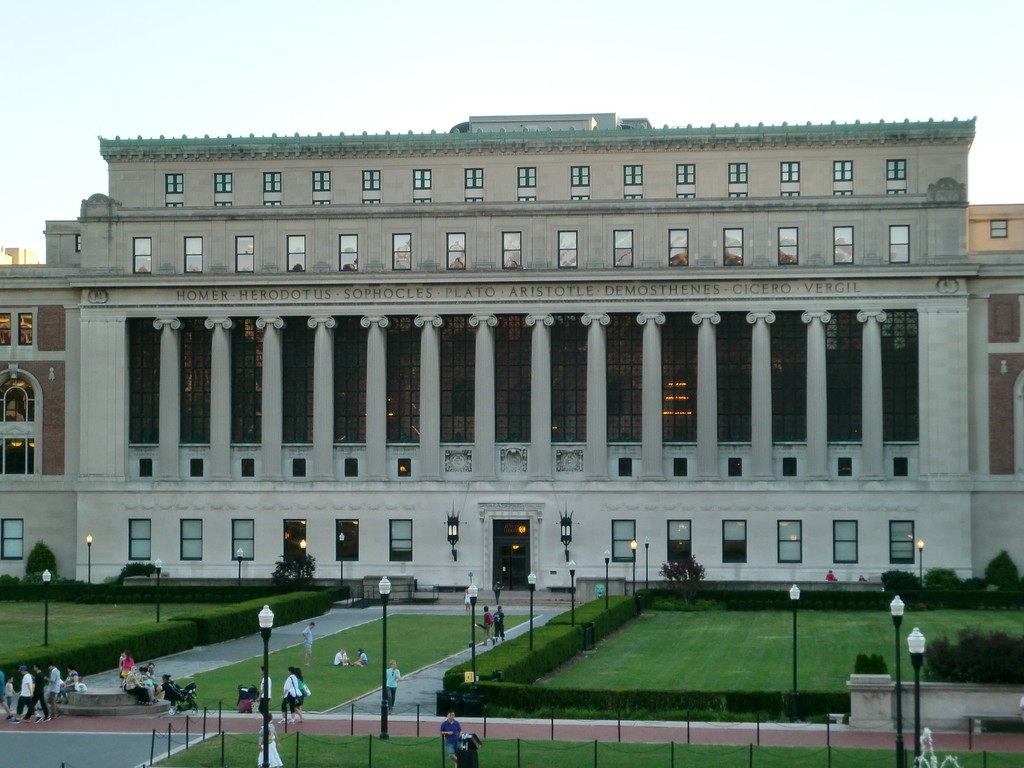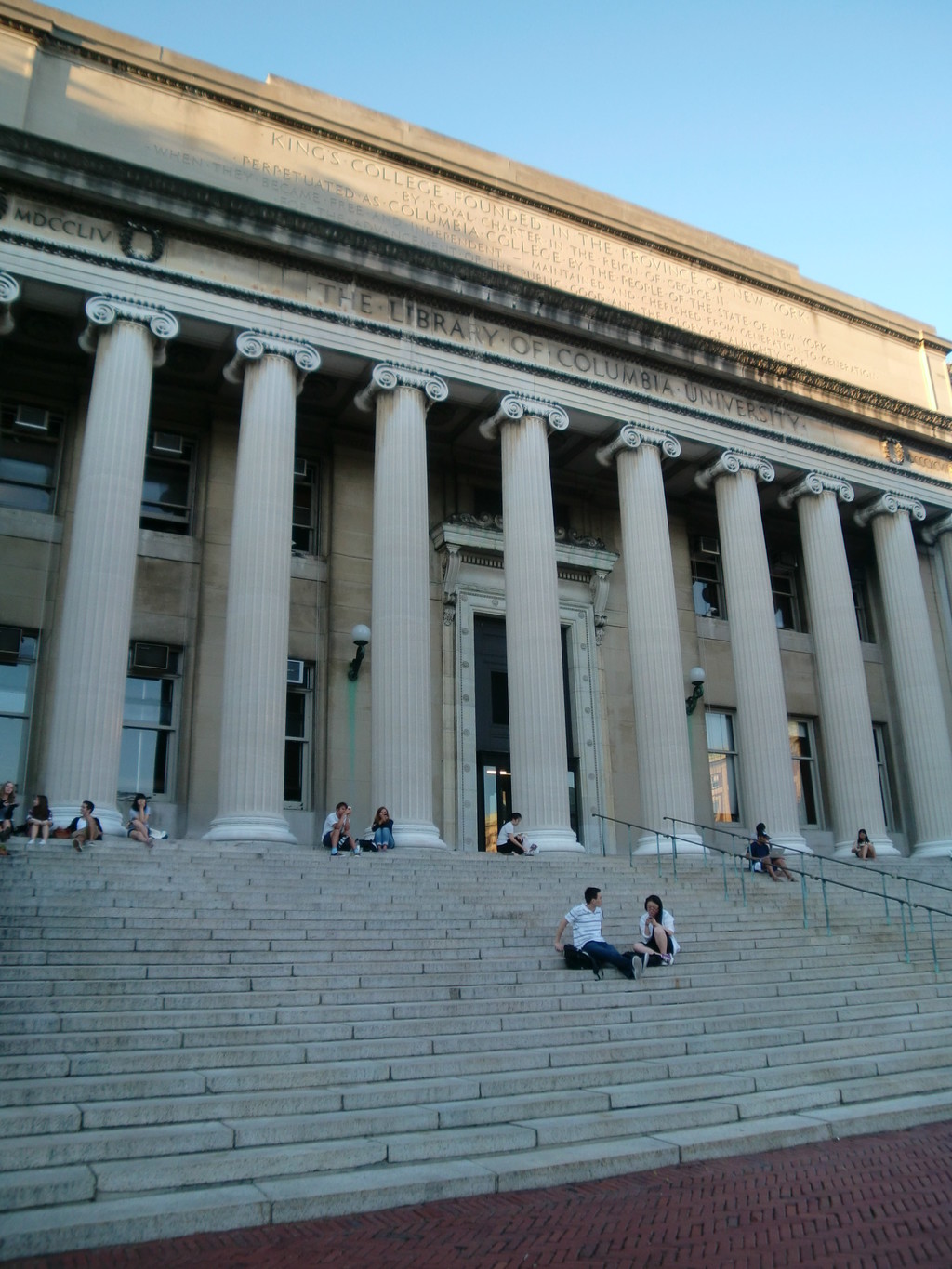Columbia University
- Address: 116th St & Broadway, New York, NY 10027, Estados Unidos
- Tags:
 What to see New York,
New York,
United States
What to see New York,
New York,
United States
- Telephone: +1 212-854-17
- Website: www.columbia.edu
Columbia University

The links between the University of Columbia and the city of New York go back a long way, right back to the foundation of the University of Columbia in 1754, when it was originally King's College. 50 years before King George II of England established it by royal charter as the 'College of the Province of New York', in the city of New York... it was known as 'Kings College'. One of the first advocates he wrote to the Anglican church was that 'New York is the centre of Latin English and a suitable location for a college'.
The college had its first class in the summer of 1754. The campus was located in a sacristy room that belonged to the college but was part of the Trinidad church, which is today part of Lower Manhattan. The first class consisted of 8 students and was taught by a member of the teaching association- Colonial investigator and Anglican minister Samuel Johnson, who was also the first president of the first university college. Johnson organised a curriculum of 13 subjects that complied with the principles of the royal charter, in order to provide 'the instruction and education of young people in languages, liberal arts and sciences'. By the fall, Johnson's son William, became a member of the Constitutional Convention and president of the College, and joined his father as a temporary structure.
During the next six years, King's College hired its first regular member of the faculty, its first class year graduated with a grade 5 degree in a graduation ceremony in Saint George's Chapel, and a real campus was built in Park Place which was 3 hectares large, presented to the college from the Trinity Church. This campus has been in use since the start of the American Revolution.
By 1763, Samuel Johnson had retired and he was replaced by Myles Cooper, a trained Oxford Minister and firm monarchist. In the middle of the Revolutionary war that started in 1775, Cooper was forced out of New York by patriots and set sail for England in a British frigate. The start was cancelled. After this, the ordained minister Benjamin Moore (Class of 1768) was made president of functions, but in 1776 his classes were cancelled because of the war. The campus was captured and put in use as a military hospital, firstly for the Continental Army and then for the British during the occupation of Manhattan.

Apart from most of the beneficaries, the students and professors were on the crown's side. Some of them, including Alexander Hamilton (Class of 1778), John Jay (Class of 1764), Governor Morris (Class of 1768) and Robert R. Livingston (Class of 1765) became important figures in the foundation of the United States.
Jay and Hamilton were fundamental in the reopening of the university in 1784. Chartered by the legislator of the State of New York as Columbia College, the new charter declared it the 'mother university of the state of New York'. 3 years later, a new charter was published that established it as the 'University of Columbia in the city of New York', returning the college to its former position as a private governed school that serves the city of New York, with an administrative council as its governing body. The charter was modified slightly in 1810 and is still in force today.
In 1857, the college moved again, this time on a site on Maison Avenue which was previously a Deaf and Dumb Asylum. Once complete, in 1860, inter college sports matches started in Columbia against NYU in a baseball match. In 1870, football had been added to the list of inter college sports, and by 1873, the triathlon.
In 1892, the mining school (now engineering), the medical school, the nursing school, the religious service school (now closed), the architecture school and the law school had all been established, as well as the former school of arts and sciences. The affiliated Barnard College and the Professor's College were also in use during this period.

It was at this time that Columbia bought land in Morningside Heights which previously homed the Bloomingdale Asylum, a building which is currently home to the 'Maison Francaise'. In 1893, the architectures McKim, Mead, and White started to design the new Morningside Heights Campus. In 1896, the University of Columbia in New York City was renamed Columbia University in New York City, with the undergraduate school retaining the name Columbia College. In 1897, the Morningside campus opened.
Throughout the 20th century, changes in Columbia reflected the changes that were happening in the world. The modern science of anthropology and the foundation of modern genetics were established in Columbia, and in 1919, they offered the first course which then became the core curriculum. This course, at the time called "War and Peace Studies" was created as a direct response to the First World War. In late 1930s and early 1940s, Columbia was the birthplace of FM radio and the first site in North America where the atom was split. Students studied with legendary teachers... Jacques Barzun '27, Mark Van Doren, Lionel Trilling '25 and II Rabi, just to name a few. Also in the 1940s, several future leaders passed through the doors, including Allen Ginsberg and Jack Kerouac '48 '44. Columbia established the Homoephile Student League, an advocacy group for the rights of homosexuals which is in fact the oldest country in 1966, and the Organization of Black Students in 1973. In 1983, Columbia College became the last Ivy League school to allow female students.
Columbia students have the best of both worlds with the comfort of the small Morningside Heights campus, as well as access to one of the most vibrant and diverse cities in the world. New York City is indeed, since it was first advocated over 300 years ago... a suitable location for a university.

Photo gallery
Content available in other languages
- Español: Columbia University
- Italiano: Università della Columbia
Rate and comment about this place!
Do you know Columbia University? Share your opinion about this place.


















